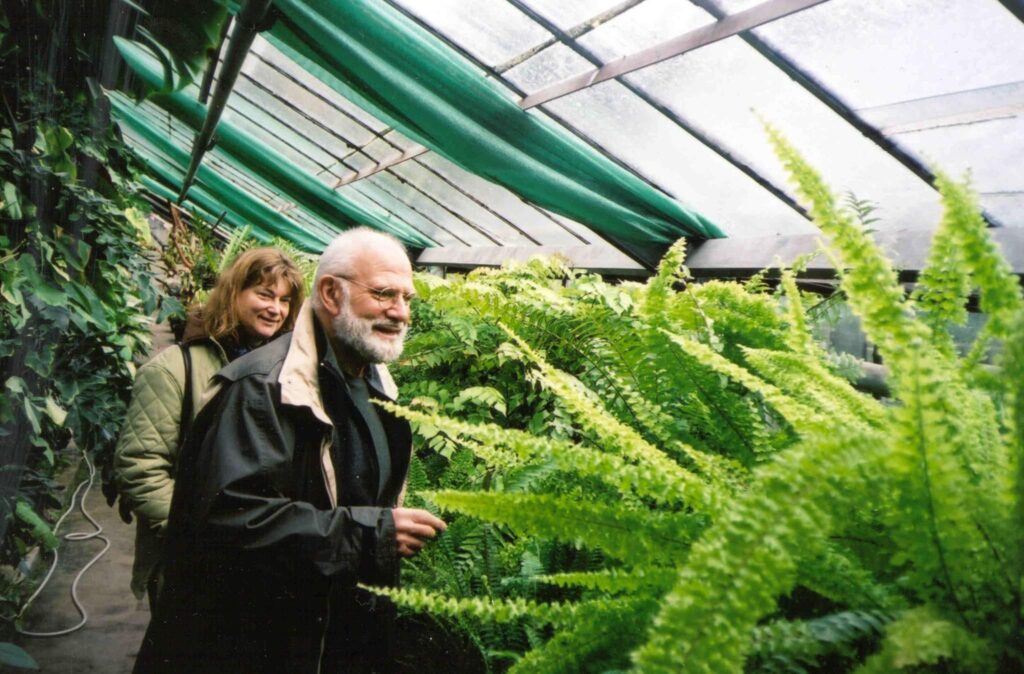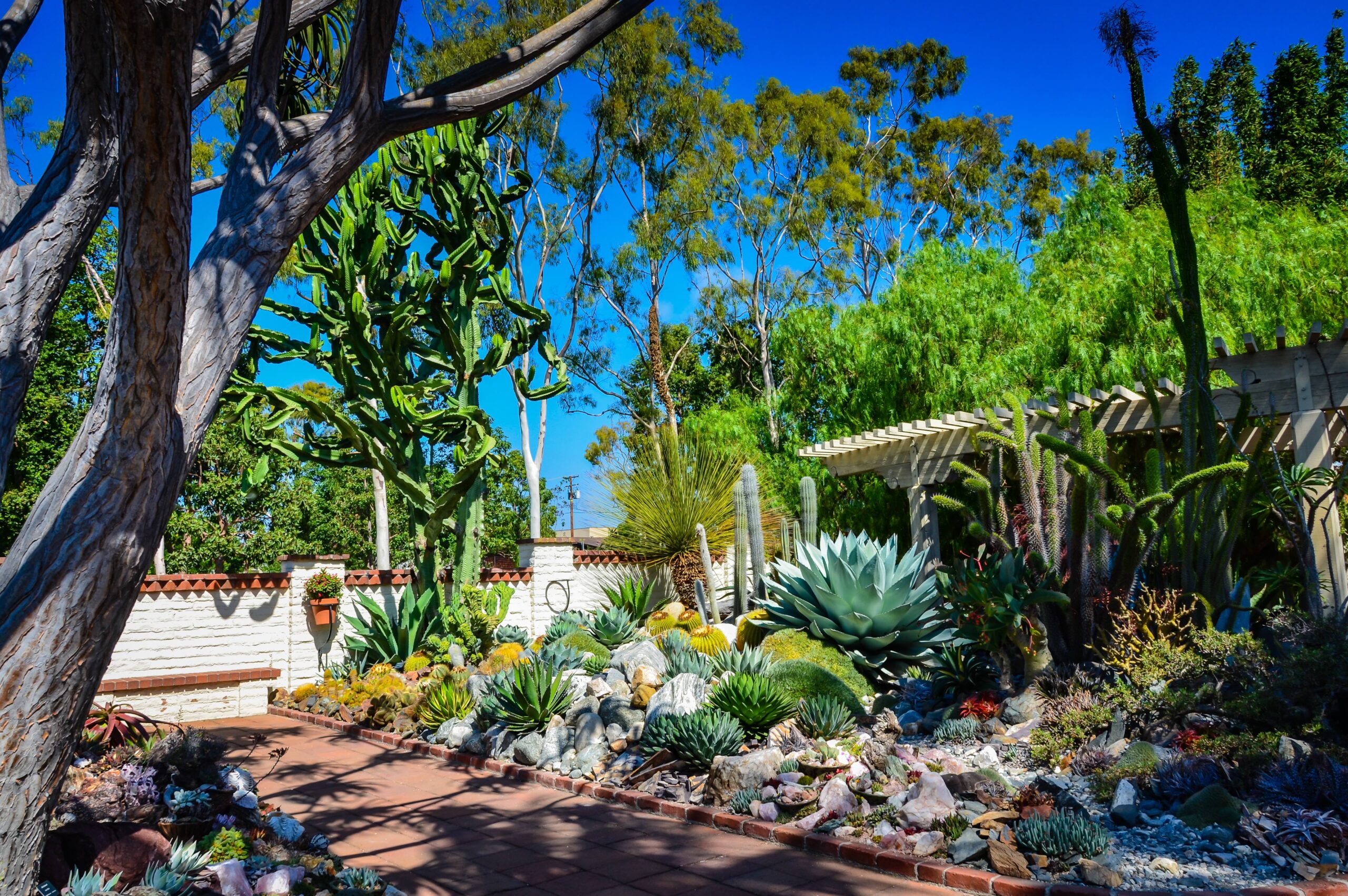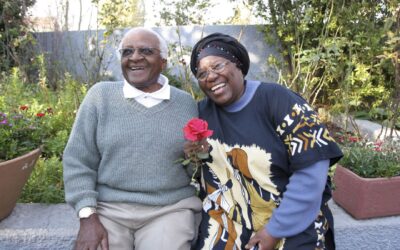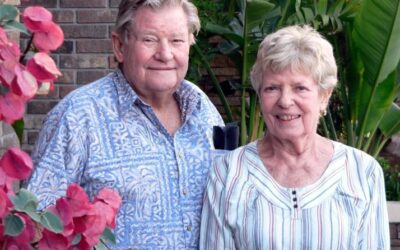As a writer, I find gardens essential to the creative process; as a physician, I take my patients to gardens whenever possible. All of us have had the experience of wandering through a lush garden or a timeless desert, walking by a river or an ocean, or climbing a mountain and finding ourselves simultaneously calmed and reinvigorated, engaged in mind, refreshed in body and spirit. The importance of these physiological states on individual and community health is fundamental and wide-ranging. In 40 years of medical practice, I have found only two types of non-pharmaceutical “therapy” to be vitally important for patients with chronic neurological diseases: music and gardens.
The wonder of gardens was introduced to me very early, before the war, when my mother or Auntie Len would take me to the great botanical garden at Kew. We had common ferns in our garden, but not the gold and silver ferns, the water ferns, the filmy ferns, the tree ferns I first saw at Kew. It was at Kew that I saw the gigantic leaf of the great Amazon water lily, Victoria regia, and like many children of my era, I was sat upon one of these giant lily pads as a baby.
As a student at Oxford, I discovered with delight a very different garden — the Oxford Botanic Garden, one of the first walled gardens established in Europe. It pleased me to think that Boyle, Hooke, Willis and other Oxford figures might have walked and meditated there in the 17th century.
I cannot say exactly how nature exerts its calming and organizing effects on our brains, but I have seen in my patients the restorative and healing powers of nature and gardens, even for those who are deeply disabled neurologically. In many cases, gardens and nature are more powerful than any medication.
I try to visit botanical gardens wherever I travel, seeing them as reflections of their times and cultures, no less than living museums or libraries of plants. I felt this strongly in the beautiful 17th-century Hortus Botanicus in Amsterdam, coeval with its neighbor, the great Portuguese Synagogue, and liked to imagine how Spinoza might have enjoyed the former after he had been excommunicated by the latter — was his vision of “Deus sive Natura” in part inspired by the Hortus?

Dr. Sacks delighting in the ferns at Longwood Gardens in Pennsylvania. Sacks was fascinated with ferns since childhood, he said. “Ferns delighted me with their curlicues, their croziers, their Victorian quality (not unlike the frilled antimacassars and lacy curtains in our house.),” he wrote in his book Oaxaca Journal. “But at a deeper level, they filled me with wonder because they were of such ancient origin… My sense of a prehistoric world, of immense spans of time, was first stimulated by ferns and fossil ferns.” (Image: Oliver Sacks Foundation Facebook page)
The botanical garden in Padua is even older, going right back to the 1540s, and medieval in its design. Here Europeans got their first look at plants from the Americas and the Orient, plant forms stranger than anything they had ever seen or dreamed of. It was here, too, that Goethe, looking at a palm, conceived his theory of the metamorphoses of plants.
When I travel with fellow swimmers and divers to the Cayman Islands, to Curacao, to Cuba, wherever — I seek out botanical gardens, counterpoints to the exquisite underwater gardens I see when I snorkel or scuba above them.
I have lived in New York City for 50 years, and living here is sometimes made bearable for me only by its gardens. This has been true for my patients, too. When I worked at Beth Abraham, a hospital just across the road from the New York Botanical Garden, I found that there was nothing long-shut-in patients loved more than a visit to the garden — they spoke of the hospital and the garden as two different worlds.
I have a number of patients with very advanced dementia or Alzheimer’s disease, who may have very little sense of orientation to their surroundings. They have forgotten, or cannot access, how to tie their shoes or handle cooking implements. But put them in front of a flower bed with some seedlings, and they will know exactly what to do — I have never seen such a patient plant something upside down.
I cannot say exactly how nature exerts its calming and organizing effects on our brains, but I have seen in my patients the restorative and healing powers of nature and gardens, even for those who are deeply disabled neurologically. In many cases, gardens and nature are more powerful than any medication.
My friend Lowell has moderately severe Tourette’s syndrome. In his usual busy, city environment, he has hundreds of tics and verbal ejaculations each day — grunting, jumping, touching things compulsively. I was therefore amazed one day when we were hiking in a desert to realize that his tics had completely disappeared. The remoteness and uncrowdedness of the scene, combined with some ineffable calming effect of nature, served to defuse his ticcing, to “normalize” his neurological state, at least for a time.
An elderly lady with Parkinson’s disease, whom I met in Guam, often found herself frozen, unable to initiate movement — a common problem for those with parkinsonism. But once we led her out into the garden, where plants and a rock garden provided a varied landscape, she was galvanized by this, and could rapidly, unaided, climb up the rocks and down again.
I have a number of patients with very advanced dementia or Alzheimer’s disease, who may have very little sense of orientation to their surroundings. They have forgotten, or cannot access, how to tie their shoes or handle cooking implements. But put them in front of a flower bed with some seedlings, and they will know exactly what to do — I have never seen such a patient plant something upside down.
My patients often live in nursing homes or chronic-care institutions, so the physical environment of these settings is crucial in promoting their well-being. Some of these institutions have actively used the design and management of their open spaces to promote better health for their patients. For example, Beth Abraham hospital, in the Bronx, is where I saw the severely parkinsonian postencephalitic patients I wrote about in “Awakenings.” In the 1960s, it was a pavilion surrounded by large gardens. As it expanded to a 500-bed institution, it swallowed most of the gardens, but it did retain a central patio full of potted plants that remains very crucial for the patients. There are also raised beds so that blind patients can touch and smell and wheelchair patients can have direct contact with the plants.
Clearly, nature calls to something very deep in us. Biophilia, the love of nature and living things, is an essential part of the human condition. Hortophilia, the desire to interact with, manage and tend nature, is also deeply instilled in us. The role that nature plays in health and healing becomes even more critical for people working long days in windowless offices, for those living in city neighborhoods without access to green spaces, for children in city schools or for those in institutional settings such as nursing homes. The effects of nature’s qualities on health are not only spiritual and emotional but physical and neurological. I have no doubt that they reflect deep changes in the brain’s physiology, and perhaps even its structure.
Further Reading & Resources
- The original New York Times Opinion Piece, The Healing Power of Gardens, by Dr. Sacks
- Everything in Its Place by Dr. Sacks “A final volume of essays that showcase Oliver Sacks’s broad range of interests — from his passion for ferns, swimming, and horsetails, to his final case histories exploring schizophrenia, dementia, and Alzheimer’s.”
- The Oliver Sacks Foundation for all wisdom & things “Dr. Sacks-related”
- Coral Tree Blog: Gratitude for Our Caregivers | Elyta: Our Joyful Healer ~ a profile of one of our beloved caregivers, Elyta, who incorporates gardening into her care for our friends. “Even a simple daily activity like caring for a few potted plants, Elyta says, or being together while she works in the garden, her friends helping her with advice — doing this simple, joyful activity together — can be therapeutic.”
- Coral Tree Blog: Recommended Movies | Alive Inside: A Story of Music & Memory (The documentary features Dr. Sacks) “Michael Rossato-Bennett’s documentary follows Dan Cohen, social worker and founder of the non-profit Music & Memory, in his work, primarily with individuals isolated in nursing homes. Dan creates personalized playlists of music for his patients. “Music connects people with who they have been, who they are, and their lives,” Dan says. “Because what happens when you get old is all the things you’re familiar with and your identity are all just being peeled away.”
- Plan a visit to Sherman Gardens & Library in Corona del Mar
FEATURED IMAGE Sherman Library & Gardens, a botanical garden & historical research library just down the road in Corona del Mar.






0 Comments